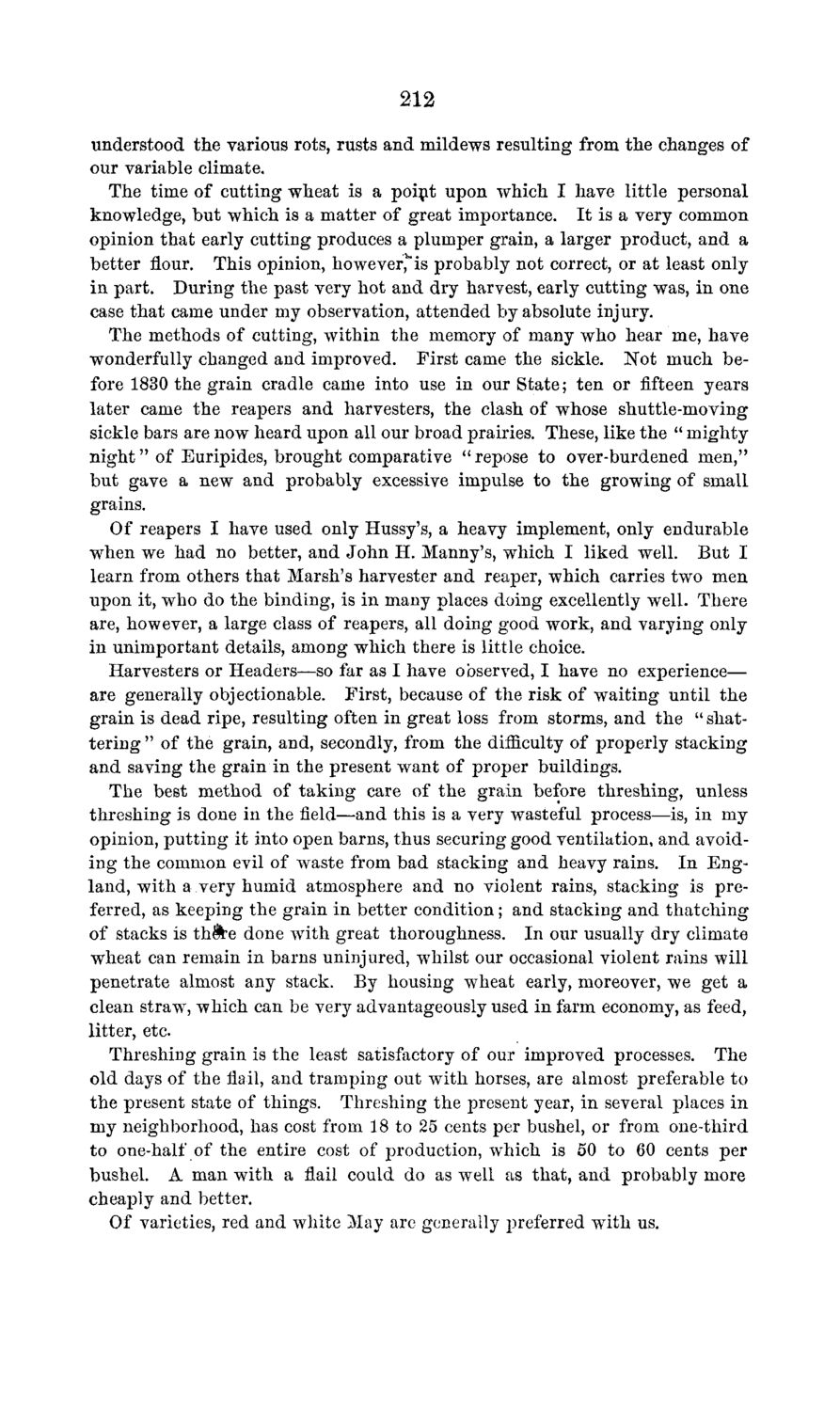| |
| |
Caption: Board of Trustees Minutes - 1869
This is a reduced-resolution page image for fast online browsing.

EXTRACTED TEXT FROM PAGE:
212 understood the various rots, rusts and mildews resulting from the changes of our variable climate. The time of cutting wheat is a point upon which I have little personal knowledge, but which is a matter of great importance. I t is a very common opinion that early cutting produces a plumper grain, a larger product, and a better flour. This opinion, however,**is probably not correct, or at least only in part. During the past very hot and dry harvest, early cutting was, in one case that came under my observation, attended by absolute injury. The methods of cutting, within t h e memory of many who hear me, have wonderfully changed and improved. First came the sickle. Not much before 1830 the grain cradle came into use in our State; ten or fifteen years later came t h e reapers and harvesters, the clash of whose shuttle-moving sickle bars are now heard upon all our broad prairies. These, like the " mighty n i g h t " of Euripides, brought comparative "repose to over-burdened men," but gave a new and probably excessive impulse to t h e growing of small grains. Of reapers I have used only Hussy's, a heavy implement, only endurable when we had no better, and J o h n H. Manny's, which I liked well. But I learn from others that Marsh's harvester and reaper, which carries two men upon it, who do the binding, is in many places doing excellently well. There are, however, a large class of reapers, all doing good work, and varying only in unimportant details, among which there is little choice. Harvesters or Headers—so far as I have observed, I have no experience— are generally objectionable. First, because of the risk of waiting until t h e grain is dead ripe, resulting often in great loss from storms, and t h e " shattering " of the grain, and, secondly, from the difficulty of properly stacking and saving the grain in the present want of proper buildings. The best method of t a k i n g care of t h e grain before threshing, unless threshing is done in the field—and this is a very wasteful process—is, in my opinion, p u t t i n g it into open barns, thus securing good ventilation, and avoidi n g the common evil of waste from bad stacking and heavy rains. I n England, with a very humid atmosphere and no violent rains, stacking is preferred, as keeping the grain in better condition; and stacking and thatching of stacks is t h i r e done with great thoroughness. In our usually dry climate wheat can remain in barns uninjured, whilst our occasional violent rains will penetrate almost any stack. By housing wheat early, moreover, we get a clean straw, which can be very advantageously used in farm economy, as feed, litter, etc. Threshing grain is the least satisfactory of our improved processes. The old days of the flail, and tramping out with horses, are almost preferable to the present state of things. Threshing the present year, in several places in my neighborhood, has cost from 18 to 25 cents per bushel, or from one-third to one-half of the entire cost of production, which is 50 to 60 cents per bushel. A man with a flail could do as well as that, and probably more cheaply and better. Of varieties, red and white May are generally preferred with us.
| |